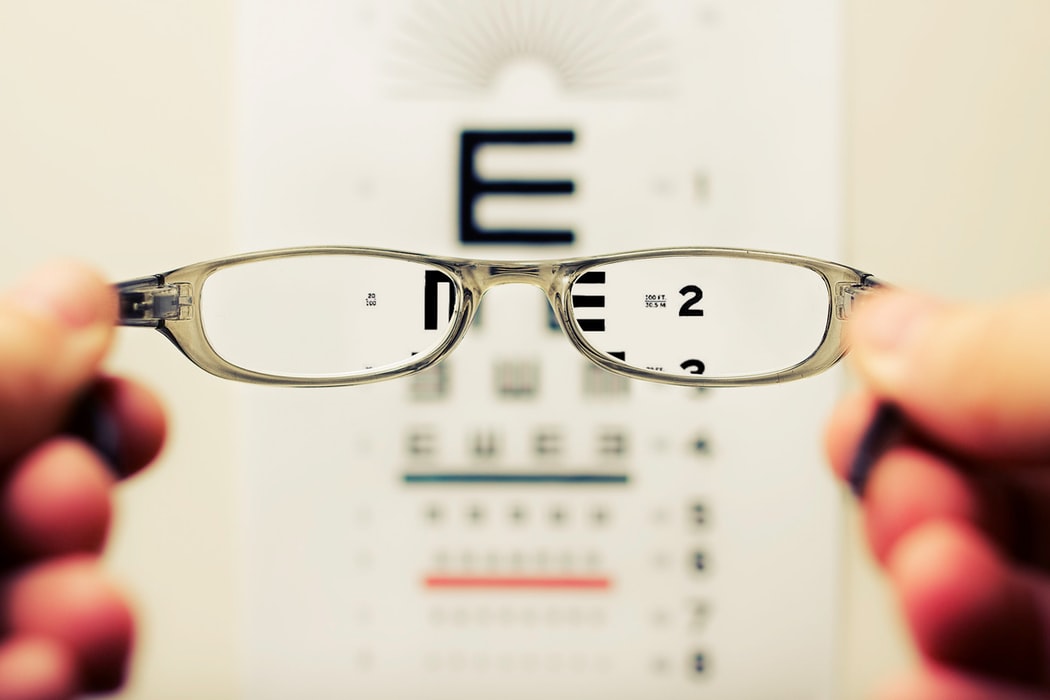
What is Astigmatism and what are the chances that I have it too?
Astigmatism is a refractive error where your eyes are unable to focus light evenly on the retina behind your eyes. This can be because of the irregular curvature of your cornea or any abnormalities of the lenses of your eyes. This can also be because of genes. Common symptoms are blurred or distorted vision. You have trouble seeing light in the dark. You have eye strain, headaches.
About 60 percent of adults have astigmatism. Chances are high you have it too. You can have myopia or hyperopia and astigmatism along with it. Astigmatism distorts your vision and you have a faulty vision with blurred lines and lights.
In normal vision, when light falls in your eyes, it is reflected back on the retina evenly. With an irregular cornea, this light is not properly reflected causing you to have a faulty vision.
Do you have astigmatism?
Look at the picture above. If you can clearly see the first panel without any blur, then you have normal vision. If your vision is even slightly blurred or blurred along the horizontal lines or vertical lines, then you have astigmatism.
If the text above appears blurry to you, astigmatism or not, you should consult your eye doctor. You can get a free eye test from Specscart. If you do not correct your vision with glasses or lenses, you will put a strain on your eyes, further damaging your eyesight.
If you are already a glasses user, remove your glasses and view the texts. If the text in the first panel appears like the one in horizontal focus or vertical focus, then you have astigmatism and you are already wearing corrective lenses. Check your prescription for cylindrical power. If you have some number or degrees denoted in that column, then you have astigmatism. The severity of astigmatism depending on the degree. If you have cylindrical power between 0.5 and 0.75, you have slight astigmatism. If your cylindrical power is more than 1.5 diopters, you will need glasses or lenses to improve your vision.
Types of Astigmatism
Astigmatism can be of three types
- Myopic Astigmatism
- Hyperopic Astigmatism
- Mixed Astigmatism
In myopic astigmatism, astigmatism is accompanied by nearsightedness. You have a perfect near vision but you have trouble viewing horizontal or vertical lines. If you have trouble viewing vertical lines then your vertical medians are affected by astigmatism and you have direct astigmatism. When you have trouble viewing horizontal lines, then you have indirect astigmatism. For instance, when you are seeing roadsigns, the letters appear blurry. If you pay close attention only letters with horizontal lines or vertical lines appear blurry.
In hyperopic Astigmatism, you have hyperopia along with astigmatism. You have trouble seeing either the horizontal or vertical lines or both clearly. You will have blurry vision when you are seeing nearby objects.
In mixed astigmatism, one of your eyes meridians is short-sighted while the other is longsighted.
How to improve your eyesight?
Astigmatism is hard to rectify because the shape of the cornea is changed. Eye surgery can remove astigmatism. You can opt for lenses or you can simply wear prescription lenses if you are not comfortable with either solution. Astigmatism will not be cured wearing eyeglasses, but you will have smoother vision while wearing glasses. You can buy glasses online and get prescription glasses made for your astigmatic eyes. You can get good quality lenses comfortable for your astigmatism in your choice of frames.
You can improve your eyesight with many healthy habits –
- By doing Eye exercises – By doing yoga or eye exercises can help reduce eye strain and headache. You will feel relieved if you do eye exercises on regular basis. Exercises like palming where you rub your palms and put your warm hands over your eyes. In this exercise, you relieve your eyes from the accumulated fatigue. Similar exercises where you shift your focus from the tip of your thumb are good for reducing your eye strain.
- Eating healthy food – Eat fit and stay fit. With your healthy diet, you can improve your vision. Eat carrots, food rich in omega-3, carotene, vitamin A, C, and E. Try to eat more green leafy vegetables, fishes, hemp seeds, etc. It’s not proven that these foods can actually cure your bad eyesight, but eating these healthy foods will sure ascertain that your eyesight will not diminish further.
- Reduce your Digital Screen time – If you are sticking to your digital screens for longer than 11 hours, you are sure to suffer from eye strain or eye fatigue. Also, your eyesight will also go bad from the long time exposure to blue lights. If possible, reduce the number of hours you spent in front of screens. You can wear blue light blocking glasses to reduce your eye fatigue from the digital screens.
- 20-20-20 – Try out this rule when you are in front of your digital screen for very long hours. Take your eyes off from your screen every twenty minutes, look at any object in the approximate distance of twenty feet for twenty seconds. This will help in relieving your eyes.
- Use sunglasses when going outdoors – Sunlight contains UV rays which can even cause blindness. Sunlight also contains blue light which is not good for your eye health. Also, the bright glare and flashes are unpleasant for your eyes. Wear sunglasses whenever you step outside your home.
- Frequently use your glasses – If you have an eyesight problem, be it myopia, hyperopia, or presbyopia, or astigmatism, wear your glasses. Your glasses correct your vision and don’t let your eyes squint to focus on things you can’t see. Your glasses reduce the strain you otherwise would feel. Putting more strain on your eyes will deteriorate your vision further.
If you TLDR-ed through the content, then, in a nutshell, pay attention to your diet, have a healthy lifestyle, and do exercises to improve your eyesight. Doing these will not cure your astigmatism but it will help in not letting your eyesight getting deteriorated further.


